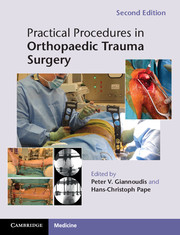Book contents
- Frontmatter
- Dedication
- Contents
- List of Contributors
- Preface
- Acknowledgements
- Part 1 Shoulder girdle
- Part 2 Upper extremity
- Part 3 Pelvis and acetabulum
- Part 4 Lower extremity
- 10 Section I: Extracapsular fractures of the hip
- 11 Section I: Fractures of the femoral shaft
- 12 Fractures of the patella
- 13 Section I: Fractures of the proximal tibia
- 14 Fractures of the ankle
- 15 Fractures of the foot
- Part 5 Spine
- Part 6 Tendon injuries
- Part 7 Compartments
- Index
14 - Fractures of the ankle
Published online by Cambridge University Press: 05 February 2014
- Frontmatter
- Dedication
- Contents
- List of Contributors
- Preface
- Acknowledgements
- Part 1 Shoulder girdle
- Part 2 Upper extremity
- Part 3 Pelvis and acetabulum
- Part 4 Lower extremity
- 10 Section I: Extracapsular fractures of the hip
- 11 Section I: Fractures of the femoral shaft
- 12 Fractures of the patella
- 13 Section I: Fractures of the proximal tibia
- 14 Fractures of the ankle
- 15 Fractures of the foot
- Part 5 Spine
- Part 6 Tendon injuries
- Part 7 Compartments
- Index
Summary
Indications
The various existing classifications are inadequate to guide the treatment of these common injuries.
Fractures with talar displacement.
Almost all bimalleolar fractures.
Preoperative planning
Clinical assessment
The mechanism of injury most commonly points to indirect rotational, translational and axial forces applied to the ankle joint.
Soft tissue swelling, ecchymosis, tenderness.
Look for associated osseous and/or soft tissue injuries.
Assess the neurovascular integrity of the extremity.
Obtain a careful patient history.
Evaluate age, osteoporosis and systemic conditions.
Smoking and diabetes are well known to adversely affect the operative management of ankle fractures.
Radiological assessment
High-quality anteroposterior and lateral radiographs (Fig. 14.1.1a, b).
Mortise view: AP in 20 degrees of internal rotation.
CT scan: for evaluation of posterior malleolus. A CT scan is useful in abduction injuries when an injury to the talar dome is suspected.
Assess degree of fragment displacement, quality of bone.
Timing of surgery
In cases of an ankle subluxation, reduction is necessary in the emergency department (Fig. 14.1.1c, d).
Dictated by the sot tissue condition.
Before the development of sot tissue swelling or blisters.
Delayed ORIF when sot tissue injury resolves. In these cases think about soft tissue resuscitation by means of a spanning external ixator to the ankle prior to the internal ixation.
- Type
- Chapter
- Information
- Practical Procedures in Orthopaedic Trauma Surgery , pp. 385 - 397Publisher: Cambridge University PressPrint publication year: 2014



